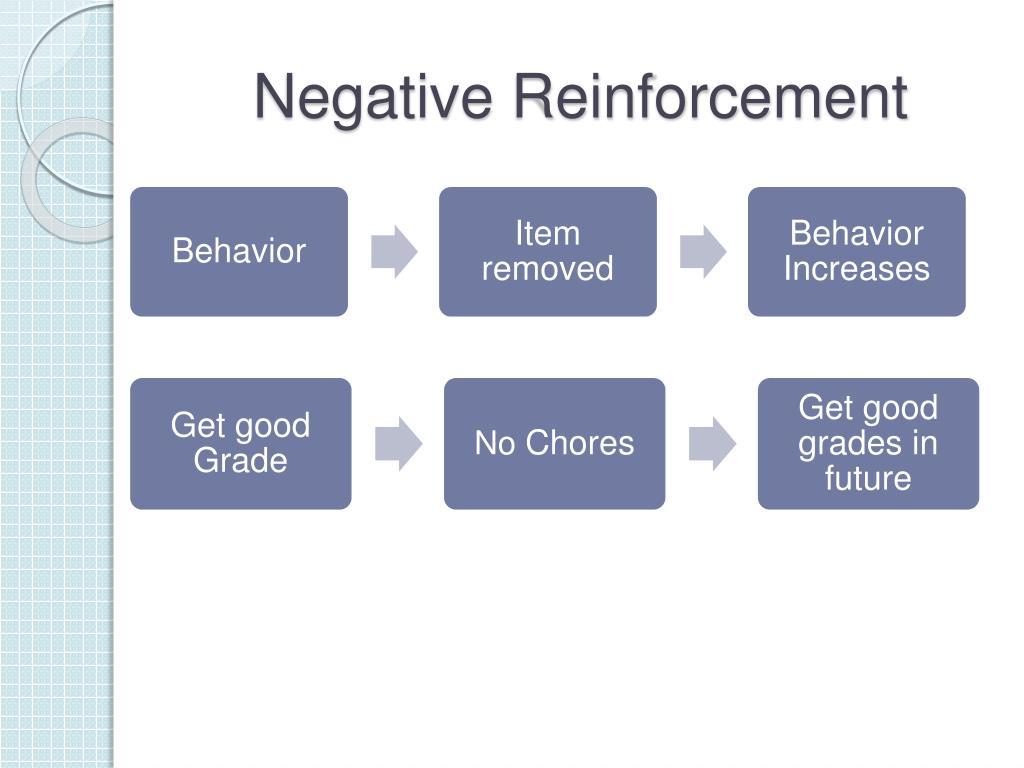


Negative reinforcement is best understood through examples. Negative reinforcement specifically is when something is taken away in response to a person’s behavior to create a favorable outcome. You will perform a certain behavior to remove something and get a favorable outcome, or will not perform a certain behavior to avoid an unfavorable outcome. If the consequence following the behavior is bad, an individual will want to stop carrying out that behavior.Īfter you reinforce the behavior with the consequence a number of times, it is thought that the behavior will become innate and will shape your future behaviors. The thought is that if the consequence after the behavior leads to a good result, an individual will want to continue carrying out that behavior. Operant conditioning is the process of shaping behaviors by reinforcing specific behaviors through consequences.įor example, when you carry out a certain behavior, a certain consequence will occur.

Negative reinforcement is a concept of operant conditioning. In this blog piece we will discuss what negative reinforcement is, what it is used for, when it is most effective, provide specific examples of negative reinforcement, and clarify common misconceptions about it. More specifically, a negative or aversive stimulus is taken away from a situation, creating a better outcome. Negative reinforcement occurs when something is taken away in response to a person’s behavior, creating an overall favorable outcome. Negative reinforcement is a concept frequently described in behavioral psychology. Behavioral psychology is a branch of psychology specializing in shaping behaviors.


 0 kommentar(er)
0 kommentar(er)
